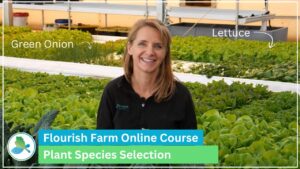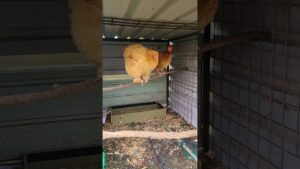
Table Of Contents
Table Of Contents
Introduction:
High Initial Costs: A Significant Barrier to Entry
Technical Difficulty
Limited Plant and Fish Variety: A Drawback of Aquaponics Systems
Conclusion
FAQ
Introduction:

Aquaponics is a farming method that merges aquaculture (fish farming) and hydroponics (soil-less plant cultivation) to form a self-sufficient ecosystem.
It’s a popular choice for those looking for an eco-friendly and sustainable way to grow crops and raise fish.
However, as with any farming method, there are several drawbacks to consider before committing to aquaponics.
In this article, we’ll discuss the 3 major disadvantages of aquaponics to help you make an informed decision.
High Initial Costs: A Significant Barrier to Entry
When considering aquaponics, one of the most significant disadvantages to keep in mind is the high initial costs. This farming method requires a significant investment in equipment, materials, and infrastructure. Here are a few examples of the expenses that can add up when setting up an aquaponics system:
- Fish tanks: Depending on the size and scale of your operation, a large, specialized fish tank can cost thousands of dollars.
- Hydroponic systems: Whether you’re using NFT (nutrient film technique) systems, DWC (deep water culture) systems, or another type of hydroponic setup, the cost of these components can also add up quickly.
- Pumps, filters, and other equipment: Keeping water flowing smoothly through your aquaponics system requires specialized equipment, including water pumps, filters, and aeration systems. These items can range from a few hundred dollars to several thousand dollars, depending on your needs.
- Plants and seeds: Starting your hydroponic system with seedlings or seed can add another significant cost to your budget.
- Labor costs: While you may be able to complete some of the work yourself, setting up an aquaponics system can also require the help of professionals, such as plumbers and electricians. These costs add up quickly and can significantly impact your bottom line.
While the benefits of aquaponics can be significant – including a year-round growing season, reduced water use, and more – the high initial costs can be a significant barrier to entry for many aspiring farmers and gardeners.
To help manage costs, it’s important to carefully plan and research your aquaponics setup, carefully considering all of the expenses involved. This may involve starting with a smaller-scale operation or partnering with others to share resources. Additionally, some communities may offer grants or other funding opportunities for sustainable farming and gardening initiatives, which can help offset some of the upfront costs of setting up an aquaponics system.
Technical Difficulty
One of the major disadvantages of aquaponics is the technical difficulty associated with setting up and maintaining the system. The complexity of the system can make it difficult for those with limited technical knowledge or experience to successfully grow plants and fish in an aquaponic system.
Examples:
- One example of the technical difficulty of aquaponics is the need for precise control of water chemistry and temperature. If the pH levels are not kept within the correct range, it can harm the plants and fish in the system.
- Another example is the need for regular monitoring and maintenance of the system. This includes cleaning the tanks, checking the levels of oxygen and ammonia, and making sure that all pumps and aerators are working properly.
- The technical requirements of an aquaponic system can also be a barrier to entry for those who lack the resources to invest in specialized equipment or pay for professional installation and maintenance services.
IMPORTANT:
- Precision control of water chemistry and temperature is essential to the success of an aquaponic system
- Regular monitoring and maintenance is required to keep the system running smoothly
- Lack of resources to invest in specialized equipment or professional services can be a barrier to entry
In conclusion, while aquaponics has the potential to provide a sustainable and efficient method of food production, the technical difficulty associated with setting up and maintaining the system can be a significant drawback. As with any farming method, it is important to carefully consider the resources and expertise required before making an investment in an aquaponic system.

Limited Plant and Fish Variety: A Drawback of Aquaponics Systems
While aquaponics systems offer the advantage of growing plants and raising fish in one cohesive unit, they also have a drawback in terms of the limited plant and fish variety. This is because the system is designed to work best with specific species of fish and plants that are compatible with each other and the conditions within the system.
For example, Tilapia is a commonly used fish species in aquaponics because they are hardy and easy to care for. However, this limits the options for those who may want to raise other types of fish. Additionally, the type of plants grown in an aquaponic system is often limited to leafy greens, herbs, and some varieties of vegetables. While these plants are easy to grow in an aquaponic system, they may not be suitable for those who are looking to grow larger or more specialized crops.
The following are examples of the limited plant and fish variety in aquaponics systems:
- Fish Species: Tilapia, catfish, perch, koi, etc.
- Plants: Lettuce, spinach, basil, mint, watercress, etc.
It’s important to keep in mind that the limited plant and fish variety in aquaponics systems may not meet the needs or preferences of all farmers and hobbyists. If you are looking to grow a specific crop or raise a particular type of fish, it is recommended to do your research beforehand to determine if an aquaponic system is the right fit for you.
In conclusion, while the limited plant and fish variety in aquaponics systems can be seen as a drawback, it is also one of the factors that contributes to the stability and ease of maintenance of these systems. It’s up to each individual to weigh the benefits and drawbacks and decide if aquaponics is the right choice for them.
Key Takeaways
- Aquaponics is a unique form of farming that combines aquaculture and hydroponics to create a stable, self-sustaining ecosystem.
- Despite its many benefits, aquaponics has a few disadvantages including high initial costs, limited plant and fish variety, and technical difficulty.
- To determine if aquaponics is right for you, it’s important to weigh these disadvantages against the benefits of this innovative farming method.

Conclusion
In conclusion, aquaponics is a fascinating and innovative form of farming that has many benefits. However, as with any new technology, it’s not without its challenges. High initial costs, limited plant and fish variety, and technical difficulty are just a few of the drawbacks of this method. That being said, these drawbacks can often be outweighed by the benefits of a self-sustaining, sustainable, and efficient farming system. If you’re considering aquaponics, be sure to carefully weigh the disadvantages against the benefits to determine if it’s right for you.
FAQ
- Is aquaponics expensive to set up?
Yes, aquaponics systems can be expensive to set up due to the cost of equipment and supplies, such as tanks, pumps, and filters. In addition, the installation process can be complex, requiring specialized knowledge and expertise. - What kind of fish can be raised in an aquaponics system?
Typically, tilapia and other warm-water fish are the most common fish species raised in aquaponics systems. However, some farmers may choose to raise cold-water fish, such as trout, depending on the climate and system setup. - Can all types of plants be grown in an aquaponics system?
Not all plants are well-suited to growing in an aquaponics system. Due to the nature of the setup, certain plants may not thrive in this environment. Some of the most common plants grown in aquaponics include lettuce, herbs, and tomatoes. - Is aquaponics difficult to maintain?
Aquaponics systems can be challenging to maintain, particularly for those without prior experience or expertise. Regular monitoring and maintenance are essential for keeping the system functioning properly, and any problems or malfunctions can be difficult to diagnose and fix. - Is aquaponics a sustainable form of farming?
Yes, aquaponics is considered a sustainable form of farming due to its closed-loop design, which reduces the need for inputs such as water, fertilizer, and pesticides. The symbiotic relationship between the plants and fish helps to create a self-sustaining ecosystem, making aquaponics a more environmentally friendly option than traditional agriculture.
**This page contains affiliate links. If you choose to purchase after clicking a link, I may receive a commission at no extra cost to you.**




